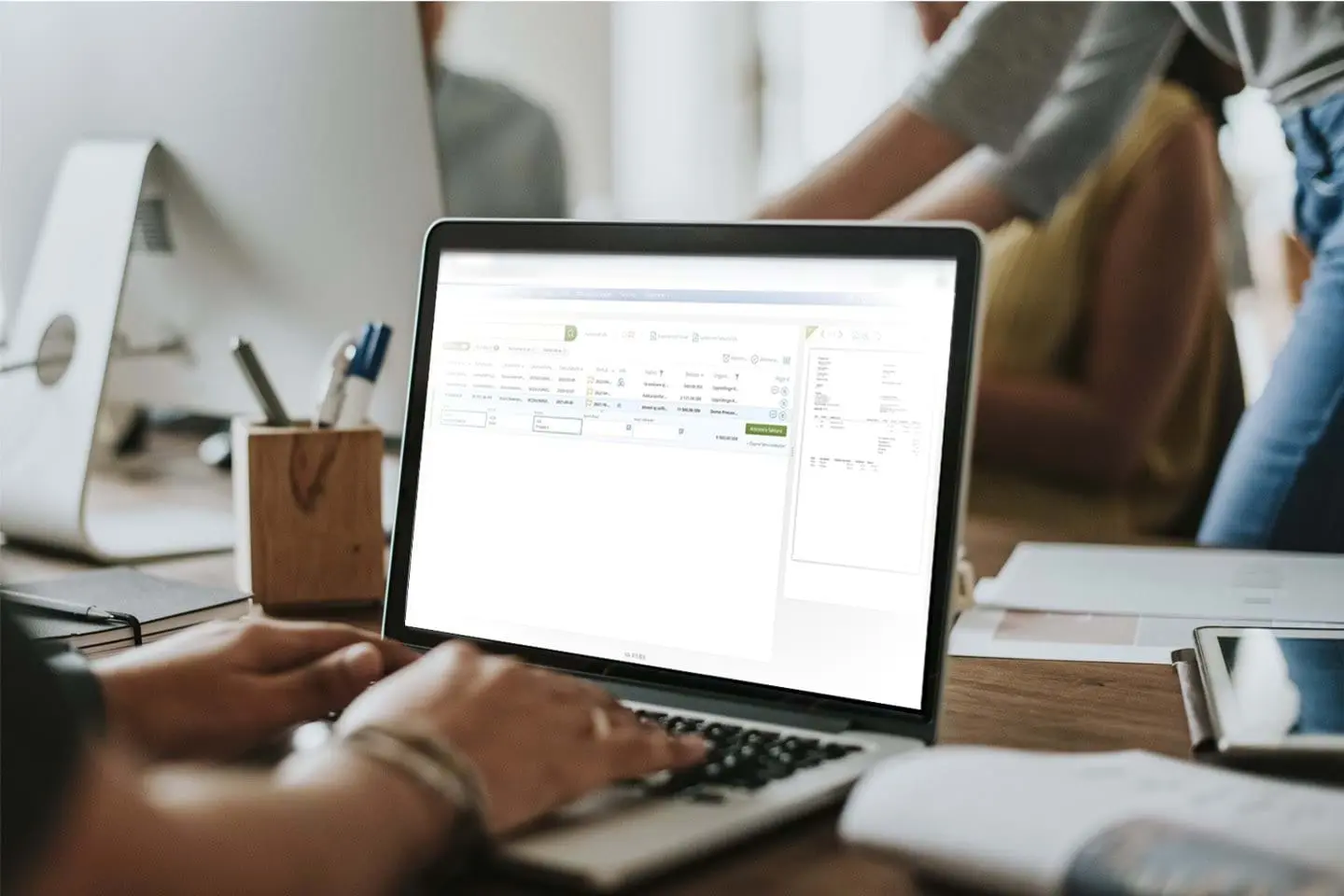5 tips for more efficient procurement processes in large organizations
Operational purchasing efficiency and invoice automation are invaluable strategies for large organizations striving to optimize their workflows and reduce costs. Below are five actionable tips that successful companies in this area always prioritize.
5 tips for more efficient purchasing processes in large organizations
Giving you more time for your core business!
1. Implementing a procurement system
A procurement system offers an automated solution for managing purchasing processes from start to finish. By using such a system, companies can:
-
Centralize purchasing: Collect all purchasing activities on one platform for better visibility and control.
-
Standardize processes: Unified procedures for all purchases make it easier to follow policies and reduce the risk of errors.
-
Improve interaction with suppliers: Effective communication and collaboration with suppliers can be automated and optimized.
2. Purchasing and invoice management in one system - start and finish of the same process
By managing the process from purchase to invoice in the same system (Purchase to Pay), you get a seamless process from purchase to pay. This brings benefits such as:
-
Reduced manual processing
The user can relate to an interface and with the approval process already at the time of the order, you do not have to stop invoices in the back end as they can be matched automatically against order documents and delivery (3 way match). In addition, you get full control of the costs - before they occur (not after when it is too late to do something about it). -
Faster approval process
Electronic approvals ensure that orders and invoices (when not matched) are approved more quickly, but the big advantage lies in the many rules that can be set up to manage the process fully automatically. Recurring purchases/costs? No problem, with a modern purchase to pay solution you can handle these automatically without human intervention with, for example, rules for subscription invoices. -
Improved data quality
With the entire process in the same system, data quality is impeccable. Do you already have an invoice management solution that you want to keep? Then make sure your purchasing and invoicing systems are seamlessly integrated with each other. Then data quality and three-way matching can still be achieved. Second best - but still clearly much better than separate processes!

3. Use data analysis for better purchasing decisions
Data is king when it comes to making informed decisions. Through advanced data analytics, companies can:
-
Identify savings opportunities:
Analysis of purchasing patterns can reveal areas where better terms can be negotiated or suppliers consolidated. -
Identify bottlenecks:
Understand which parts of the business are not buying/using systems and contracts correctly. You can simply do something about the bottlenecks. -
Predicting trends and needs:
Using historical data to predict future purchasing needs: -
Analyzing supplier performance:
Monitoring and evaluating suppliers' delivery accuracy and quality contributes to long-term cooperation.
4. Automating approval processes
By automating approval processes and focusing on discrepancies instead of each transaction, companies can save huge sums on administration efficiency. In plain language, this means: pay automatically what is correct against orders and deliveries, but handle manually or with the support of AI what deviates.
If you also have good system support, you can:
-
Minimized delay:
Approvals can be done anywhere, anytime through mobile access, speeding up the overall process. Not only good for business, but also for all managers who can approve from home or on the go. -
Greater transparency:
Getting a clear overview of each step in the process helps identify bottlenecks and enables quick action. -
Risk minimization:
Rules-based workflows ensure that only authorized persons can approve purchases and payments, reducing the risks of errors and irregularities.
5. Continue to train and update the team
Technology and processes are constantly changing. Therefore, it is crucial to:
-
Keep the team informed:
Regular training on new tools, systems and policies ensures quality throughout the procurement process. -
Fostering a culture of continuous improvement:
Employees are encouraged to give feedback and make suggestions for improvement, stimulating innovation and engagement.
By following these five tips, large companies and organizations can significantly improve their efficiency and reduce costs in their purchasing and invoicing processes. This not only contributes to a more efficient operational function, but also to a stronger, more competitive position in the marketplace where more time can be focused on the core business.


